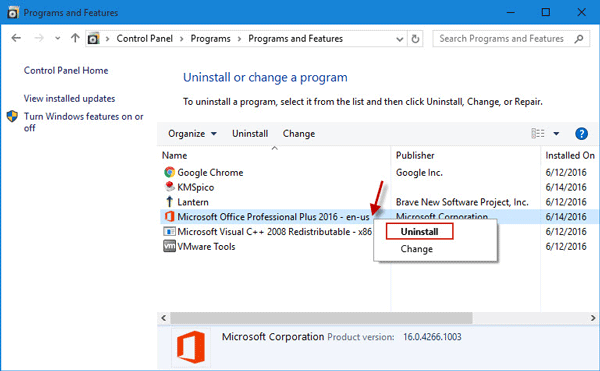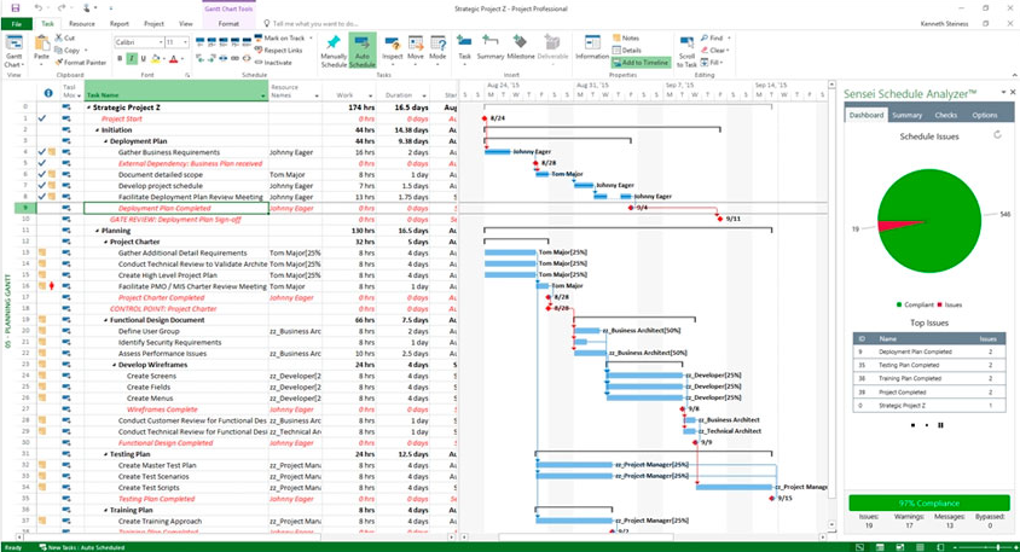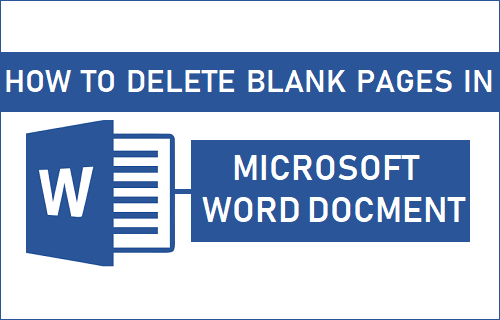Uninstall Microsoft Office Mac 2016 3,5/5 4956 reviews
Today Microsoft office is equipped in almost all the PCs and Macs that people are using. But, sometimes the Office software available on your device starts to create hurdles in your work. In this situation, all you want to do is remove it from your PC. There might be other reasons for doing so. Sometimes, you want to fix certain bugs. At other times, you might want to install the updated version of the software and that is why you wish to uninstall the previously installed version of it so that you can download the updated version without any hassle. This article highlights the main topics that are related to uninstalling Microsoft Office.
- Uninstall Microsoft Office Mac 2016 Torrent
- Clean Uninstall Microsoft Office 2016 Mac
- Uninstall Microsoft Office Mac 2016 Free Download
Can we use an Office removal tool for Mac?
Aug 27, 2019 I Uninstall Microsoft Office 2016 in Applications Step 1. Launch Finder on your Mac and then choose Applications. Press the Command button on the keyboard and click the whole Microsoft Office applications. Ctrl + click or right-click and select Move to Trash in the menu list later. Jul 11, 2019 After you restart your computer, the uninstall tool automatically re-opens to complete the final step of the uninstall process. Follow the remaining steps. If you need to reinstall Office, select the version you want to install and follow those steps: Office 365, Office 2019, Office 2016, Office 2013, Office 2010, or Office 2007. Apr 04, 2015 Remove Office 2016 for Mac. Anyone know how to do this. Do I need to simply drag each application to the trash and empty or is there an uninstall utility I am missing. For instructions on how to uninstall Mac Office 2016 use this link: How to Uninstall Mac Office. If you previously owned a copy of Mac Office 2011 or you currently have an Office 365 subscription you can use the following link to locate the local phone number for Global Microsoft's Customer Service Support. If you’ve simply had enough of Office 2016 crashing on your Mac or just want to completely remove it, here’s how to fully uninstall Microsoft Office 2016 for Mac.Office 2016 is a huge package taking up more than 6GB of disk space (compared to 2.5GB in Office 2011. Microsoft Office 365 includes a set of Mac productivity apps such as Word, Excel, PowerPoint, OneNote, and Outlook. So make sure you want to get rid of all these Office 365 in-built products before starting. Also make sure you use your Mac as administrator account to ensure the safety removal of Microsoft Office 365 (How To Uninstall 1Password.
The Office Removal Tool is used to get rid of any Office application or software which is currently present on your device. Using this, you can easily uninstall any version of Office such as Microsoft Office 2007,2010, 2011, 2013, and 2016 from your PC, laptop, computer, tablet, and mobile phones. But, unfortunately, you can use it to uninstall Office software from Mac devices including Catalina, Mojave, MacBook Pro and MacBook air because it only works on Windows OS including Windows 10.
Steps to uninstall Office from Mac
- The first pre-requisite to uninstall Office is to quit all the Office apps that are running in the background.
- After this, open the finder from your Mac device.
- Now, go to the “Applications” folder.
- Now, locate the version of Office that you wish to uninstall.
- Hold it and move it to Trash.
- After moving the Office software into Trash, do not forget to empty the Trash to get rid of it completely.
- To uninstall it completely, you have to remove the residual files also for which the discussion has been further in this article.
Read Related article – https://support.office.com/en-us/article/uninstall-office-for-mac
How to remove Office license files on a mac?
- In the beginning, you have to download the license removal tool form the official website of Office.
- Once you download it, click on the .pkg file and open it.
- After this, click on the “Continue” button and follow the instructions as given by the setup wizard.
- Now, click on the “install” option and enter the admin password when prompted.
- Run the tool and when it completes the removal process, close it.
- You may need to restart your Mac device to remove it completely.
How to uninstall Office updates on Mac?
- Use the “Dock” to locate the “Applications” folder.
- Locate the version of Office that you want to uninstall.
- Now, drag it and move it to “Trash”.
- Once, you remove it from your device, you have to install it once again.
- You can install the Office software directly from the official website by logging into your Office account.
- If you have an installation disc, then insert the Office disc into the optical bay of your Mac.
- Now, double-click on the “Office” icon and “Office Installer” too.
- Further, click on the “Continue” button and then click on the “Agree” option.
- Wait for the installation to complete and click on the “Close” button.
- You can choose the Office update from the home page of Microsoft that you want to download.
How to uninstall Microsoft Office 2007 corrupted?
Sometimes you want to uninstall Microsoft Office 2007 but unable to do so because there are corrupted files that are not letting you do so. In this situation, you can try the following things:
- Restart your computer using the “Start” menu.
- When it restarts, go to the “control panel”.
- From here, click on the “Programs and Features” option.
- Further, click on the “Uninstall applet”.
- If this doesn’t work, you can try to uninstall Office using Microsoft Fix it 50154 which is available at office.com/setup.
How to completely remove Office 2016 from registry?
- Open up RegEdit by clicking on “Start” followed by “Run”.
- Now, type “regedit” and hit the “Enter” key.
- After this, locate the Office Registry Key in HKEY_LOCAL_MACHINESOFTWAREMicrosoftOffice.
- Further, locate the corresponding Registration key.
- You will find multiple hashed keys for different Office products you have installed.
- After locating the correct hashed key, delete it after making sure thatthere is a backup for it.
If you are still unable to uninstall Microsoft Office from your Mac or Windows devices, then you may try to follow the process again and check if you haven’t missed out on any crucial step. For more updates regarding Microsoft Office, become a regular visitor at the official website of Office.

Read –How to install and uninstall Apps on Mac?
-->Applies to:Office for Mac, Office 2019 for Mac, Office 2016 for Mac
There are two basic ways that you, as an admin, can deploy Office for Mac to users in your organization:
Uninstall Microsoft Office Mac 2016 Torrent
Provide your users with the installer package file, and have them install Office for Mac for themselves
Download the installer package file to your local network, and then use your software distribution tools to deploy Office for Mac to your users
If you have an Office 365 plan, you can provide your users with instructions on how to download and install Office for Mac for themselves. To install Office for Mac, a user has to be administrator on the Mac or know an administrator account name and password.
Clean Uninstall Microsoft Office 2016 Mac
But, if you deploy Office for Mac for your users, you have more control over the deployment, including which users get Office for Mac and when. To plan your deployment, review the following information.
Microsoft project for mac free download - Microsoft Office Project Standard 2007, Microsoft Office Project Professional 2010, Microsoft Project Professional 2016 (64-Bit), and many more programs.  Mar 13, 2018 I have Microsoft 365 loaded on my MAC but the subscription has lapsed and microsoft have frozen all the programs - I can open documents but cannot edit any of them. I have bought Project Professional 2016 through a HUP, but I cannot get this to download to my MAC. Microsoft project professional 2016 free download - Microsoft Office 2016 Preview, Microsoft Excel 2016, Microsoft Powerpoint 2016, and many more programs.
Mar 13, 2018 I have Microsoft 365 loaded on my MAC but the subscription has lapsed and microsoft have frozen all the programs - I can open documents but cannot edit any of them. I have bought Project Professional 2016 through a HUP, but I cannot get this to download to my MAC. Microsoft project professional 2016 free download - Microsoft Office 2016 Preview, Microsoft Excel 2016, Microsoft Powerpoint 2016, and many more programs.
Download Office for Mac to your local network
The easiest way to download Office for Mac, and ensure you're always getting the most current version and build, is to download directly from the Office Content Delivery Network (CDN) on the internet. Here are the links to the installer packages for the Office suite, which contains all the applications:
- Office for Mac (for Office 365 plans)
- Office 2019 for Mac (for retail or volume licensed versions)
- Office 2016 for Mac (for retail or volume licensed versions)
Note
- Installer and update packages for individual applications are also available on the Office CDN. For links to those, see Most current packages for Office for Mac.
- The same installer package is used for Office for Mac and Office 2019 for Mac. How you activate the product determines whether you get the features for Office for Mac or the features for Office 2019 for Mac.
- Unlike Office 2016 for Mac, the installer package for Office 2019 for Mac isn't available on the Volume Licensing Service Center (VLSC).
Deploy Office for Mac to users in your organization
Office for Mac uses the Apple Installer technology for installation. That means you can use the software distribution tools that you normally use to deploy software to Mac users. Some of the most common tools are Jamf Pro, Munki, and AutoPkg. You can also use Apple Remote Desktop and AppleScript.
Important
There are changes in Office for Mac to improve security, including implementing Apple app sandboxing guidelines. These changes mean that you can't customize the app bundle before or after you deploy Office. Don't add, change, or remove files in an app bundle. For example, even if you don't need the French language resource files for Excel, don't delete them. This change prevents Excel from starting. Even though you can't customize app bundles, you can configure preferences for each app.
Additional deployment information for Office for Mac
Whichever deployment method you decide to use, the following information can help you plan your Office for Mac deployment.
Uninstall Microsoft Office Mac 2016 Free Download
What's new: Before you deploy, review the information about what's new for admins in Office for Mac. This includes information about system requirements, language support, and new features.
Side-by-side installation: You can't have Office 2016 for Mac and Office 2019 for Mac installed on the same computer. Also, you can't have Office for Mac (from an Office 365 plan) along with either Office 2016 for Mac or Office 2019 for Mac (both of which are one-time purchase versions) installed on the same computer.
Deploying individual apps: Installer package files for individual applications are available on the Office Content Delivery Network (CDN). For links to those, see Most current packages for Office for Mac.
Activation: To use Office for Mac, it needs to be activated. Before you deploy, review the information about how activation works in Office for Mac.
Uninstalling: If you need to uninstall Office for Mac, you can follow these steps to completely remove Office for Mac. Unfortunately, there is no program to uninstall Office for Mac automatically.
Office for Mac 2011: Support for Office for Mac 2011 ended on October 10, 2017. All of your Office for Mac 2011 apps will continue to function. But, you could expose yourself to serious and potentially harmful security risks. To completely remove Office for Mac 2011, follow these steps.
Upgrading to Office 2019 for Mac: If you're a volume licensed customer, you can upgrade to Office 2019 for Mac without uninstalling Office 2016 for Mac. You just need to download the 2019 version of the Volume License (VL) Serializer from the Volume Licensing Service Center (VLSC) and deploy it to each computer running Office 2016 for Mac. If you need to go back to Office 2016 for Mac after you've upgraded, follow these steps.
Version numbers Version numbers of 16.17 or higher for retail or volume licensed installs indicate you have Office 2019 for Mac. Office 2016 for Mac has version numbers of 16.16 or lower. Since the 'major' version (16) hasn't changed between Office 2016 for Mac and Office 2019 for Mac, application settings, including policies, preferences, and preference domains are similar between the two versions. Also, add-ins and other extensibility solutions that are compatible with Office 2016 for Mac will most likely be compatible with Office 2019 for Mac or will require minimal testing.

